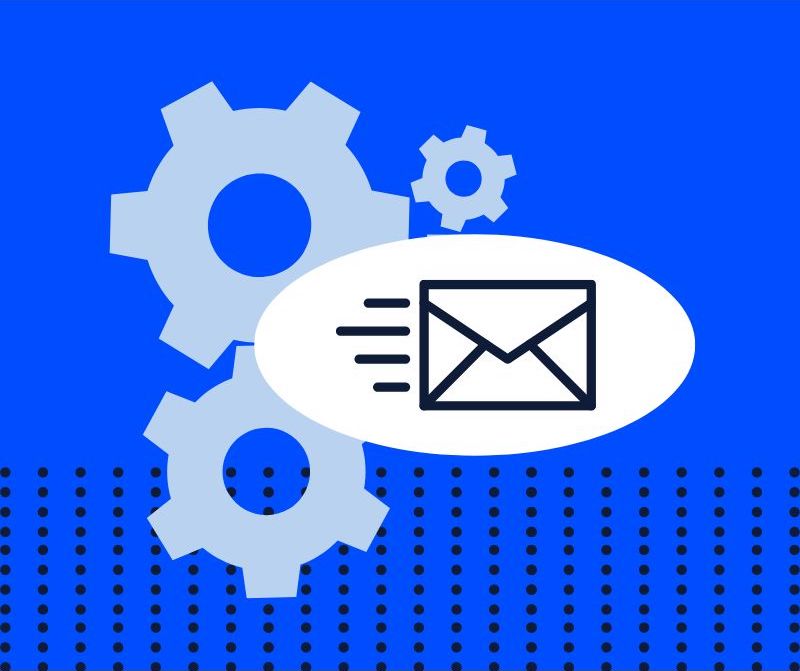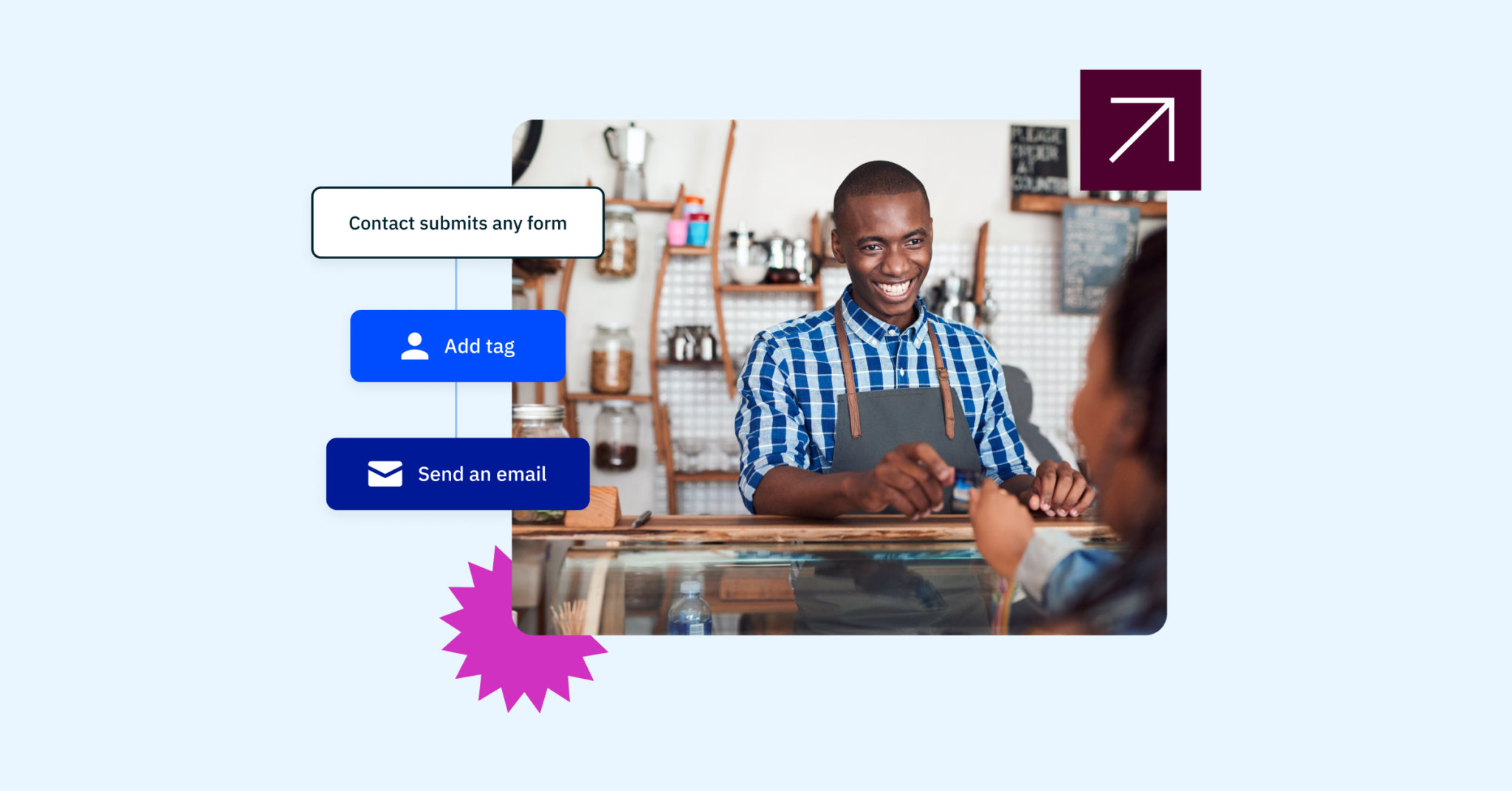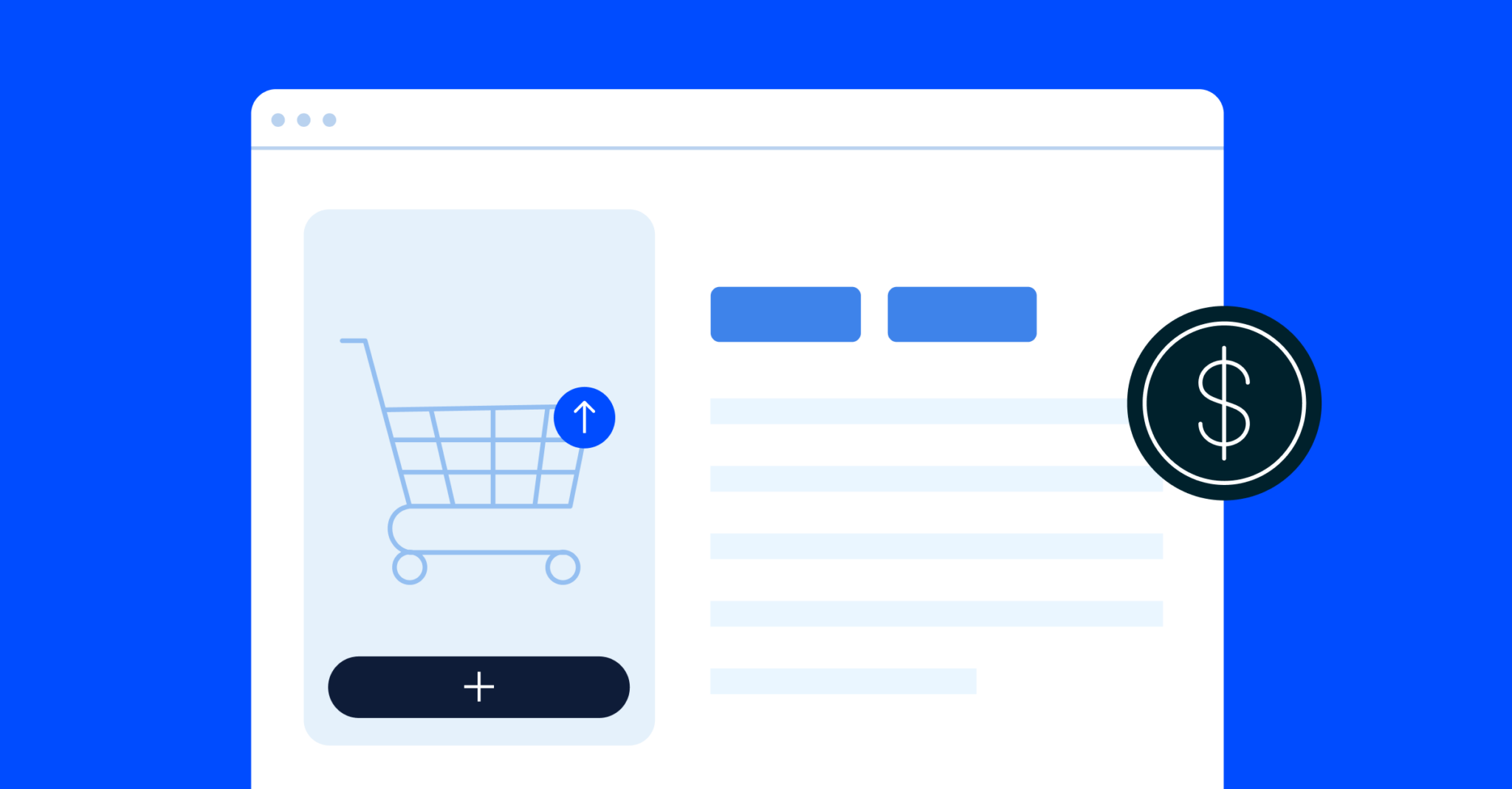Marketing automation is the use of software and technology to automate repetitive, manual marketing activities. Marketing automation is often used for activities like email, advertising, and social media posts.
Why use marketing automation?
Your ultimate goal of marketing automation is to elevate and streamline the communication you send out, and automation helps you do this by gathering customer data from your channels and using it to improve user experience. By understanding your customers’ habits and interests, you’ll be able to interact with them on a more personal level. In doing so, you’ll increase your qualified leads, grow sales, and your marketing team’s processes will become more profitable.
According to recent customer experience statistics, 75% of consumers choose retail brands with personalized messaging, offers, and experiences. Additionally, 70% of consumers saying a company’s understanding of their individual needs influences their loyalty.
By developing personalized marketing techniques, your customers will feel more connected to you. They’ll associate your business with understanding their needs, and your custom messages will establish goodwill and trust toward your brand.
Benefits of marketing automation
Whenever you think of “automating” something, the first thought that may cross your mind is will it help you save time? That should be the baseline for any marketing automation software you choose to adopt.
However, there are several other benefits you’ll get to take advantage of, too. Let’s take a look at them below.
Analyze your customers at scale
66% of customers say they’ll pay more for a great experience, so the ability to analyze your customers (no matter how large or small your audience is) matters more than ever.
Marketing automation software offers you the opportunity to analyze and categorize your customers. There are a range of strategies for doing this, including looking at each customer’s age, interests, and shopping habits to personalize the communication they receive.
Using this data, you can classify your customers into different groups and send automated messages—even SMS marketing messages—to them.
Partnering your marketing automation platform with a customer relationship management (CRM) platform further strengthens your marketing tactics. CRMs, such as ActiveCampaign’s sales CRM, keep records of your customers’ consumer habits and will help you categorize them in order to reference them when interacting one-on-one.
Personalize communication through segmentation
Segmenting your customers is an important step in automating your marketing strategy, but that alone won’t give your sales a boost if you’re inundating your customers through email or social media.
Segmentation plays a huge role in sending out relevant content to the right people at the right time. By segmenting your audience based on things they have in common (location, interests, age, etc.), you can make your marketing more personalized and relevant with tailored messaging. You can even reward specific segments once they’ve performed a specific action (clicked on a webinar link or spent a certain amount of money on your site).
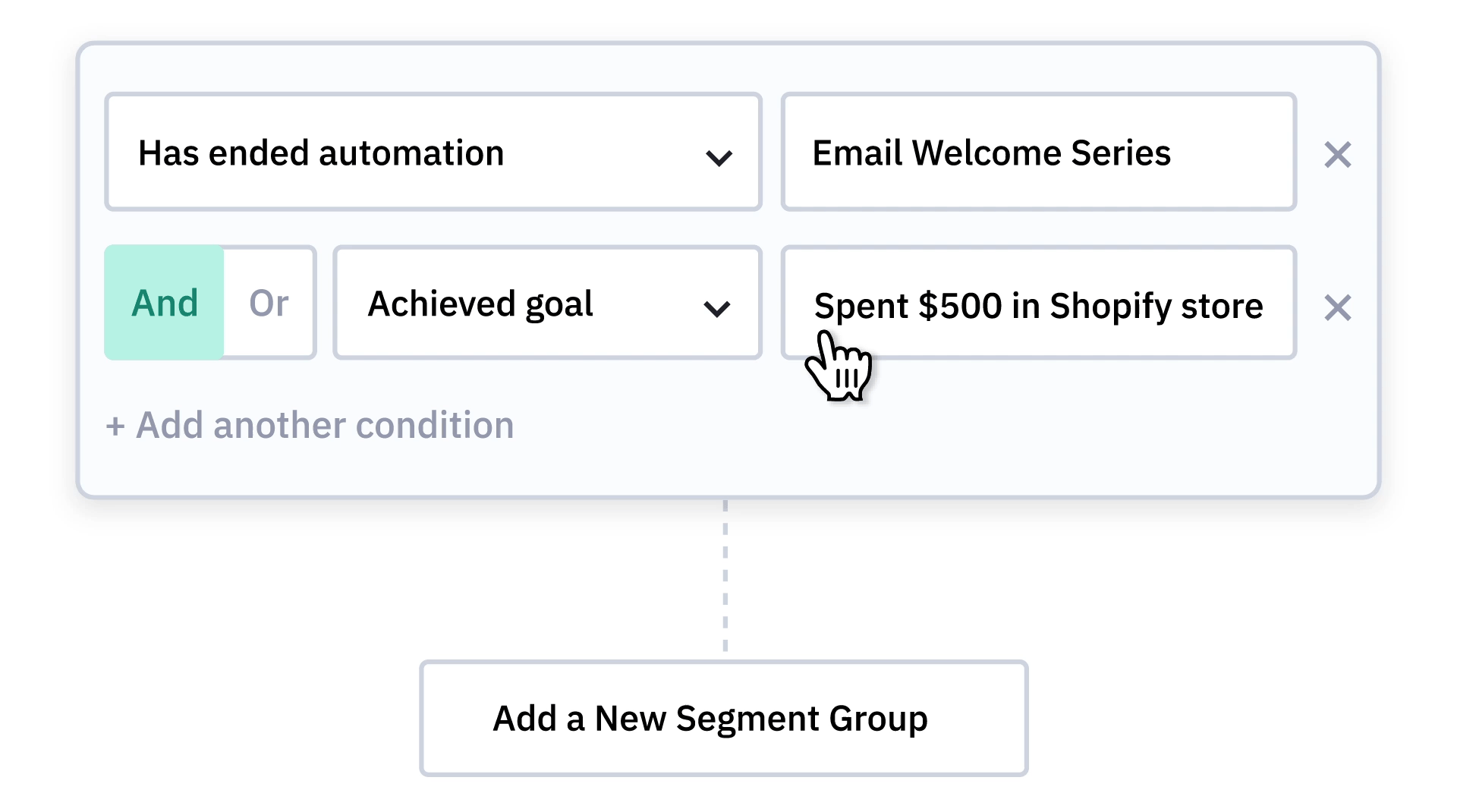
84% of customers claim that the best way for a company to gain their business is by treating them like a person and not a number. For this reason, your marketing and sales teams should develop a balanced automated marketing strategy in order to enhance the customer experience.
An effective strategy that large and small businesses alike use is email drip campaigns. With this method, you’ll send pre-written emails in intervals according to your customer categories. It’s important to monitor your customers’ interactions to see just how short or long of a period you should wait between your next personalized marketing message. If you market too aggressively, you could turn customers away. But if you wait too long, you risk them choosing a competitor.
Eliminate trivial work and focus on what matters
Few people enjoy the monotony of repetitive tasks, but repetition is essential to success when it comes to marketing. By developing streamlined marketing automation practices, your business will benefit by using your employees’ time for higher-level tasks.
This could mean that because you’ve implemented a strong automation strategy, your marketing department is able to shift its focus to work on improving customer experience, offering extra attention to inquiries, and resolving issues in a more personalized, human way.
Save time and money
One of the greatest benefits of marketing automation is the time and resources you’ll save by developing a marketing automation strategy. In the past, personalized marketing involved typing a customer’s name into each email and keeping track of birthdays and other important events.
Now, you can harness the power of a marketing automation platform to do this work for you. With the hours your team will save with their workflows by having emails and social media do your personalized marketing, they can invest their time in other aspects of your business.
How to apply marketing automation to your business
Effective automation touch points rely on data. Whenever a prospect makes a purchase from your store, subscribes to your email list, or clicks on your ad, they’re feeding you with valuable information. There are several ways to uncover data about your audience. For example, you can learn about where your customers or potential customers live and how they engage with your marketing material by tracking their activities in a marketing automation solution.
Email service providers are one of the most basic and common data-gathering and automation tools that marketers use.
Regardless of the automation tool you choose, here are some of the most common ways businesses utilize them:
- Preparing the types of messaging you want to send to your customers beforehand
- Determining which of your contacts you should target for different messaging approaches
- Deciding under what circumstances you want the message to be activated and sent to your customers
High-quality marketing automation tools will engage your contacts at a time when they’re most likely to convert into sales, based on the data they gather.
Want to dive deeper into marketing automation? Check out these resources:
Customer Segmentation: Everything You Need to Know
Dynamic Content for Email Marketing
How to Build a High-Performing Marketing Automation Strategy
Top 10 Best Marketing Automation Software Solutions
What are some of the common ways to use marketing automation?
There are various marketing automation solutions on the market, each with its own advantages and quirks. In some cases, it may be beneficial for your business to use more than one. Below are some of the most common ways companies around the world are using marketing automation tools:
According to Statista, email users amounted to 3.9 billion in 2019. By 2024, they estimate this number will grow to nearly 4.5 billion global users.
Given these statistics and that email doesn’t depend on a search engine or social media platform changing their policies (or algorithm), email is still the most reliable and successful marketing channel.
Like all forms of marketing automation, email automation takes some upfront legwork. You’ll need to determine your funnels and what customers belong to which in order to cover your bases and assess every scenario where you have the opportunity to automate your emails. Examples include a welcome email when someone signs up for your email list or an abandoned cart email if someone leaves an unpurchased item behind.
After you’ve set up your email automation, you’ll be able to look at your customer data like click-to-open rates, page visits, CTA clicks, and others. Using this information, you can tweak the timing and content of your emails to maximize sales and new leads. If you include pricing in your email campaigns, remember to update any future price changes in your automated templates.
Social media scheduling
According to SocialMediaToday, 83% of social media marketing users believe that post-scheduling is an effective way to automate. However, there are right and wrong ways to use social media scheduling tools—people can often spot bots in comments, as they tend to leave repetitive and questionable content.
Instead, you should take advantage of social media marketing automation by doing the following:
- Write your posts in advance and use a tool, like Sprout Social, to schedule them. You can schedule your posts weeks or months in advance, depending on your needs.
- Use automated bots for private social media messages to let your customers know when a customer service representative will be available to support them.
- Sign up for a service that will automate your social media ad content. It will use data to know the top-performing pages it should promote and which marketing channels to promote them on.
As a word of caution, you shouldn’t use a “set it and forget it” approach to social media automation. Situations evolve, especially if you’re posting on topics revolving around current events. So, you want to make sure your automation system isn’t posting anything you wrote a while back that could embarrass your business if the circumstances changed
Retargeting
Automating your retargeting efforts will help you increase your chances of making a sale.
Let’s assume a potential customer abandons a cart in your online store. Instead of using your marketing team’s time to follow up with them individually (or worse, not following up with them at all), retargeting automation allows you to send out an email after a set period of time. You should test out different ways to nudge your potential customers into reconsidering an item.
Ideas for how you can test your automatic retargeting strategies include:
- How soon you email them after the last contact
- Number of times you email them
- Frequency between follow-up emails
- Content of your emails, including testing out promotions
Targeted marketing like this has an average of 3 times the click-through rate compared to emails sent without using data, so it’s worth the time to play with different scenarios to see which is most effective for your business.
Customer journey
The concept of the “customer journey” means that you look for digital marketing techniques that will tap into various user experiences, including cognitive, sensory, and behavioral.
Some marketing automation software allows you to map out consumers’ behavior in terms of the kind of content they consume online. It’s a valuable tool for automation marketers since it helps them predict how customers might behave if they tweak different marketing techniques to appeal more to their natural purchasing instincts. In turn, this could have a positive effect on customer loyalty, a win-win for all.
A/B split testing
Some of the most effective marketing automation tools offer optimization and recommendations for improving your sales and generating leads. Many services provide the option for A/B testing, which is also called split testing.
A/B testing allows you to analyze two variants of emails or landing pages. It strives to keep conditions as equal as possible so that you can compare click-through rates and engagement between both tests.
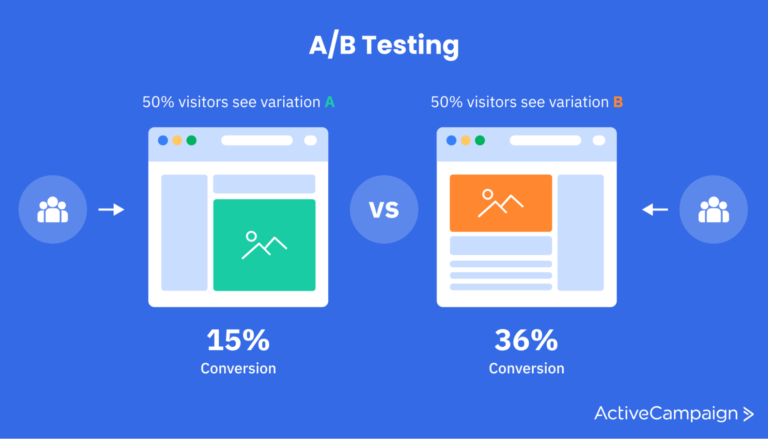
Other features of automation tools that offer optimizations include product recommendations. In this case, if a customer clicks on a product, the automation tool will automatically show them other similar items they may be interested in purchasing.
Dynamic content is yet another advantage of optimization automation. With this, the content of a webpage or email will change as the software tracks a user’s behavior and interests.
Want to see OUR marketing automation in action?
Enter your email below and get our best marketing automation advice once each week.Sign Up
Marketing automation and customer experience
Automating your marketing tasks seems like a dream come true for many companies, but you might be wondering: How will it affect your customer experience strategy? After all, there’s little point in pouring time into developing catchy drip campaigns if your automation strategy will scare off customers.
There are three cycles that consumers go through before making a purchase, including:
- Awareness
- Consideration
- Purchase
How quickly potential customers pass through these phases depends on the person, their circumstances, and the price (buying a home will require more consideration than choosing a pack of gum). Therefore, if you’re providing your customers with useful advice and information, your automated marketing techniques will statistically be a positive experience for them as they pass from the awareness to the consideration phase.
Similarly, if a customer leaves an abandoned cart, it cues you that they had a genuine interest in your product. In that case, you could create an abandoned email tailored to the product, explaining its features in more detail and how it will benefit them.
On the other hand, if someone signed up for your email list but data shows that they haven’t interacted in a while, sending out a personalized automated email touching base can offer an excellent user experience. This shows them your consideration for their interaction and may positively affect marketing ROI in the long run.
Setting up an automated contact system that sends relevant content or promotions to your potential customers can build trust. The customer will know that your emails contain valuable information and they’ll be more willing to spend time reading them. Plus, it’s an excellent opportunity to showcase a promotion or loyalty program.
Let’s face it—everyone loves to feel like they’re getting a good deal.
Marketing automation best practices
Of the many goals that automating marketing techniques can help you achieve, 61% of marketers say lead generation is their primary aim. Whether your goal is to gain new leads, retain customers, or drive sales, the strategies below will help you become a more effective automated marketer.
Set goals
Knowing you want to improve your inbound marketing strategies is great, but setting a goal of getting “better” won’t get you far. To set achievable goals, assess the data you currently have and develop your goals from there.
Monitoring behavioral data is imperative for measuring progress and understanding customer behavior. Equally important is creating a personalized experience, adjusting your goals to accommodate the situation as you implement your marketing automation strategy, and aiming for customer retention.
Know (and segment) your audience
Before you launch an automated marketing campaign, you must categorize your customers. The more targeted your email marketing campaigns are towards a group of people, the more effective your marketing efforts will be.
The process of dividing up customers for marketing purposes is called segmentation. There are four kinds of segmentation: demographics, interests, needs, and location. By using marketing automation technology and segmenting your audience, you’ll be able to attract quality leads and hyper-target any ads you may run.
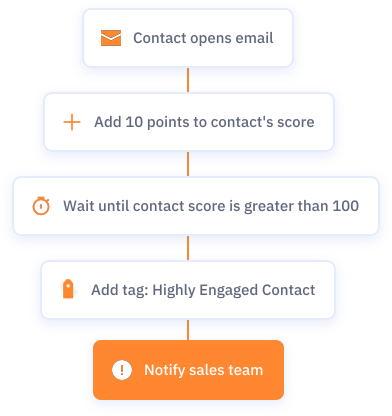
Develop an if-then strategy
It may sound funny to say, but if-then strategies are an attribute of marketing automation. For example, if someone joins your subscriber list, then what happens? Without knowing the “then” to your “if,” you’ll be setting yourself up to lose leads.
Many automated marketing software services offer you the option to customize your if-then scenarios. By doing so, you’ll tell the system how you want it to handle a range of situations and build out marketing processes to capture these “if” leads.
As an example, let’s say two people subscribe to your email list and receive a welcome message. If one person interacts with that email, you may send them another automated email with a discount for the product they were looking at. If the other person doesn’t interact with the email, you may want to have your automated system send them a different welcome email version, changing the title and wording.
Trial and error
Remember the A/B testing you read about earlier? That’ll be one of your most significant aids during the trial and error process as you feel out the customer lifecycle. Trying out new marketing automation techniques and comparing them to your current ones is critical to achieving more marketing success.
Different marketing strategies you can test include:
- Photos you use
- Content you write
- Time of day you contact your audience
- Frequency with which you contact your audience
To give your automated marketing campaign the best chance of success, study up on strategies that work well for others and apply the methods working well for you to new test marketing campaigns.
Your marketing automation secret weapon: customer retention
If you’ve been in business for a while, the following statistic might not surprise you. Finding new customers can be 5 to 25 times more expensive than maintaining the current ones you already have. So, how do you put all that advertising money to good use once a potential customer shows interest?
Below are four strategies that will help you increase your consumer conversion rates.
Send welcome emails
It may sound simple, but if someone subscribes to your email list, you should send them a welcome email. Take the opportunity to introduce your products or services, and thank them for trusting you with their contact information. Speaking of trust, you might want to mention that you won’t be spamming their email; they’ll be getting nothing but useful content from you.
A long welcome email may feel daunting to your new subscriber. However, don’t be afraid to include a link or two to a helpful document, download, or promo code. The more you can prove the value of your emails in your welcome message, the higher the chance you’ll avoid unsubscribers.
Check out 6 welcome email sequences you can steal
Personalize orders
Personalizing an email with a customer’s name is the obvious go-to, but there are many ways you can make your automated order emails more personalized. Try including a little message about your product from the CEO or incorporating a recommendations section showing other items your customers may be interested in purchasing.
Develop a loyalty or referral program
Customers love feeling appreciated, and there are fewer better ways to thank them for their business by offering a loyalty program. You can easily automate your loyalty automation rewards by developing an email you send to your customers after their purchase.
Loyalty programs can range from a blanket program for any customer to a tier of rewards based on how much money they spend. The more you make your customers feel valued, the higher chance you’ll entice them to use your business again.
If you’ve been on the fence about whether or not to implement a loyalty program, this might change your mind: Over 90% of businesses offer a loyalty program. So, with or without marketing automation, you should start one for the sake of keeping up with your competition.
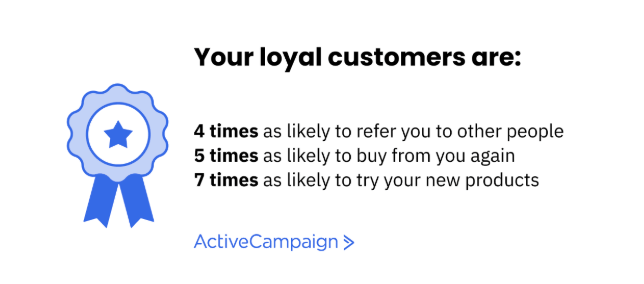
If customers eventually start to stray and stop engaging with your content, it’s wise to start thinking of how you’ll win them back. This is where reactivation emails come into play.
Click here to learn how to craft an effective reactivation email.
Remember customer milestones
Regardless of how you feel about turning a year older, most people agree that they feel good when someone remembers their birthday. By utilizing data automation, your system will automatically send an email out to your customers on their birthday, promoting lead nurturing.
Birthday email campaigns aren’t the time to sell hardcore, but they are a nice opportunity to remind your customers you exist. A great option is to offer them a special birthday promo code. If you have a new product, using the promo code will introduce the product to the customer without diverting attention from them.
Birthdays aren’t the only time when you can send a personalized email. Holidays and anniversaries are also great occasions to remind your customers that you care.
Ready to implement marketing automation?
Marketing automation will save your team time and help you personalize your customer communication. With automated data collection, you’ll be able to better target customers and pique their interest, getting you to your sales goals faster.
